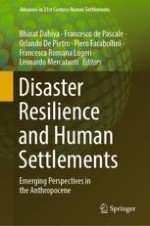2023 | Book
Disaster Resilience and Human Settlements
Emerging Perspectives in the Anthropocene
Editors: Bharat Dahiya, Francesco de Pascale, Orlando De Pietro, Piero Farabollini, Francesca Romana Lugeri, Leonardo Mercatanti
Publisher: Springer Nature Singapore
Book Series : Advances in 21st Century Human Settlements
